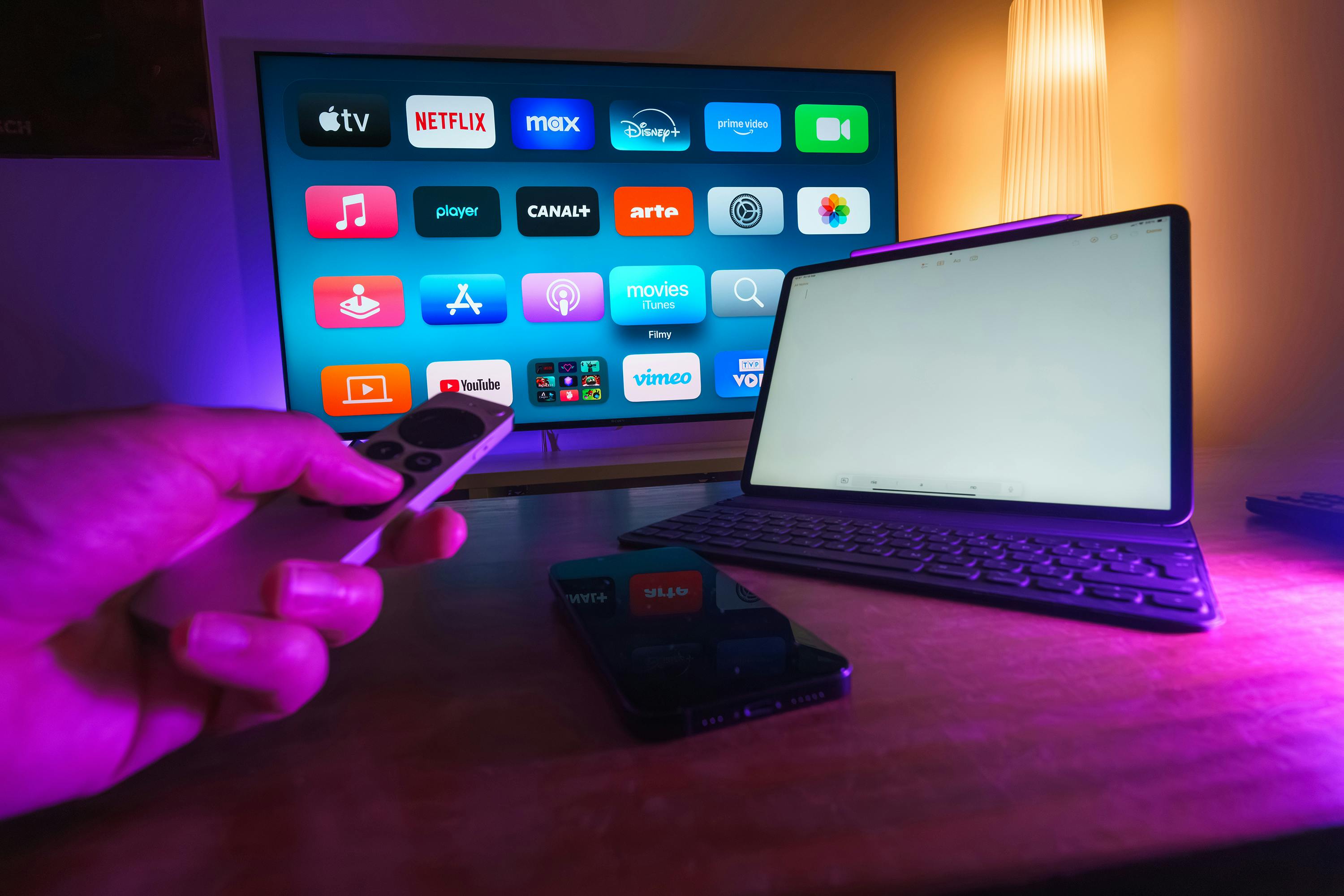Alright, so here we are talking about a YouTube to text converter, and honestly, why is no one shouting louder about this tool? I mean, come on, turning YouTube videos into text sounds like something simple but, not gonna lie, the struggle for accuracy has been real. You’d think with all the tech we have, this would be a walk in the park, right? But nope, most converters either butcher the transcript or miss half the words, making the whole thing a bit useless. So, what if I told you there’s an ultimate tool out there that nails youtube to text converter accuracy like a pro? Yeah, I was surprised too.
Maybe it’s just me, but having a reliable YouTube transcript generator feels like finding a needle in a haystack — except this needle actually works. Whether you’re a content creator wanting subtitles, a student needing notes, or just someone who hates watching videos with sound, this is kinda a game-changer. What if we’ve been wrong all along thinking all converters are created equal? Spoiler alert: they’re not. So, before you dive into the sea of random tools that promise the moon and deliver a mess, let’s unpack what makes this particular YouTube to text converter stand out, especially when it comes to precision and usability.
And honestly, who has time to edit hours of transcripts? Not me. That’s why finding this gem was like striking gold for anyone looking to save time and get stuff done without pulling their hair out. If you’re scratching your head asking, “Why is no one talking about this tool?” — well, now you know. Stick around, because we’re about to explore the ins and outs of the best YouTube to text converter you never knew you needed. Trust me, this might just change how you consume video content forever.
How Does a YouTube To Text Converter Work? A Step-by-Step Guide for Beginners
Alright, so you’ve probably stumbled upon the phrase “YouTube to text converter” somewhere in the depths of the internet, right? Maybe because you’re tired of watching videos with subtitles that look like they were made by a toddler smashing a keyboard, or you just want to get a quick transcript without rewinding a million times. Whatever the case, I’m here—bleary-eyed and half awake—to try and explain how this whole YouTube to text converter thing actually works. Spoiler: it’s not as magical as you might think, but also kinda cool? Or annoying? Let’s dive in before I lose focus.
How Does a YouTube To Text Converter Work? A Step-by-Step Guide for Beginners
First off, don’t expect to just feed a YouTube URL into some black box and get Shakespeare-level transcripts back. These converters are clever, sure, but they’re mostly powered by speech recognition tech—basically, fancy software that listens to the audio and guesses the words. Honestly, it’s like having a really tired intern trying to write everything down while someone talks 100 miles an hour.
Here’s the basic rundown:
- Input the YouTube URL: You copy-paste the link of your chosen video into the converter.
- Video Audio Extraction: The tool grabs the audio track from the video. Yeah, it’s sneaky but legal-ish, depends on the tool and usage.
- Speech Recognition Processing: This is where the magic—or chaos—happens. The audio is analysed by algorithms trained to recognise speech patterns. These algorithms try to convert sounds into text.
- Text Output: The software spits out a transcript, which might be raw, messy, or surprisingly neat depending on the tool’s quality.
- Editing/Downloading: Some converters allow you to tweak the text, add punctuation, or download it as a doc or subtitle file.
Simple, right? But… not really.
YouTube To Text Converter: Discover The Ultimate Tool For Accuracy
Now, accuracy is the whole point, isn’t it? I mean, who wants a transcript that reads like an alien invasion report? The good news is that tech has come a long way, thanks to AI and machine learning. The bad news—well, accents, mumbling, background noise, and YouTubers who speak like they’re underwater still throw a spanner in the works.
Some of the top tools out there claim they’re the “ultimate” when it comes to precision, but… maybe it’s just me, but I always take those claims with a pinch of salt. Here’s what makes a decent YouTube to text converter stand out:
- Advanced Speech Recognition Models: These use deep learning to improve understanding of context and slang.
- Language Options: Because not everyone speaks Queen’s English, innit?
- Punctuation & Grammar Fixes: None of that wall-of-text nonsense.
- Speaker Identification: Handy if there’s more than one voice (like podcasts or interviews).
- Easy Integration: Like exporting subtitles to YouTube or other platforms.
Honestly, the “ultimate” tool might be subjective depending on your needs. If you’re transcribing a cooking tutorial, slang and “ums” are probably fine, but for legal or academic stuff, you want laser precision.
Why This Still Matters (Even If You’re Not A Tech Geek)
Okay, so you might be thinking, “Why bother converting YouTube videos to text at all?” Well, turns out there’s a handful of reasons this isn’t just some niche hobby:
- Accessibility: People with hearing impairments rely on accurate transcripts.
- Content Repurposing: Bloggers, marketers, and social media folks use transcripts to create articles, captions, or SEO-friendly content.
- Quick Skimming: Sometimes you just wanna scan the text instead of watching a 45-minute video.
- Language Learning: Reading along can help with understanding accents or new vocabulary.
- Research & Archiving: Easy to search through text rather than hunting in videos.
Honestly, I find it kinda weird how we still rely on manual note-taking when there are tools that do the heavy lifting. But of course, nothing’s perfect.
Quick Comparison: Manual Transcription vs YouTube To Text Converter
| Factor | Manual Transcription | YouTube To Text Converter |
|---|---|---|
| Accuracy | High (if done carefully) | Varies, often needs correction |
| Time | Hours (for long videos) | Minutes or even seconds |
| Cost | Expensive (if outsourced) | Mostly free or cheap |
| Labour | Requires focus and effort | Automated, low-effort |
| Handling Accents/Noise | Better (human judgement) | Struggles with unclear audio |
So yeah, if you’re
Top 10 YouTube To Text Converter Tools in 2024: Which One Offers the Best Accuracy?
Alright, so you’ve probably found yourself staring at a YouTube video, thinking, “Man, I wish I could just get all this stuff in text without typing it out myself.” Honestly, same here. Enter the magical world of YouTube to text converters. Yeah, I know, it sounds like one of those things tech geeks obsess over, but stay with me. In 2024, these tools aren’t just some random gimmicks—they’re actually kinda useful, especially if you’re into content creation, research, or just want to quote something verbatim without the hassle.
Why YouTube To Text Converter Still Matters (Believe It Or Not)
Okay, you might be thinking, “Why bother? YouTube videos come with captions already, don’t they?” True, many do, but captions can be hit or miss. Sometimes they’re auto-generated, which means you’re basically reading someone’s AI guess on what was said—awkward pauses, weird spellings, and all. Plus, not all videos have captions, or they might be in a language you don’t understand.
That’s where YouTube to text converters come in. They scrape the audio, then spit out text. Sounds simple, but the devil’s in the details—accuracy varies wildly. Some tools will have you pulling your hair out, others might surprise you by actually getting it right. It’s kinda like dating, honestly.
Top 10 YouTube To Text Converter Tools in 2024: Which One Offers the Best Accuracy?
So, I’ve been poking around, testing a bunch of these tools (because, you know, someone’s gotta do the dirty work). Here’s a rundown of the top contenders. Not in any particular order because that would be too neat, and honestly, who has the time?
Sonix
- Pros: Really good at picking up accents, supports multiple languages.
- Cons: Paid service with a free trial that’s kinda stingy.
- Accuracy: Around 90% on clear audio.
Happy Scribe
- Pros: Easy interface, supports manual correction.
- Cons: Sometimes struggles with overlapping speech.
- Accuracy: Roughly 88-92%.
Otter.ai
- Pros: Real-time transcription, integrates with Zoom.
- Cons: Free version limits minutes per month.
- Accuracy: About 90%, but depends on audio quality.
Trint
- Pros: Powerful editor, good for podcast transcriptions.
- Cons: Pricing can be a bit steep for casual users.
- Accuracy: Around 89-91%.
YouTube’s Own Auto-Captions
- Pros: Free, instant.
- Cons: Often hilarious mistakes, especially with slang or jargon.
- Accuracy: 70-80%, but can be worse.
Descript
- Pros: Includes audio and video editing alongside transcription.
- Cons: Overwhelming for newbies.
- Accuracy: High 80s to low 90s.
Rev.com
- Pros: Human transcription option (hello, accuracy!).
- Cons: Costs more, obviously.
- Accuracy: ~99% with human service.
Veed.io
- Pros: Great for quick edits and subtitles.
- Cons: Less precise with complicated audio.
- Accuracy: Mid 80s%.
IBM Watson Speech to Text
- Pros: Enterprise-grade tech, lots of customization.
- Cons: Not very user-friendly for casual users.
- Accuracy: High 80s to 90%.
Google Docs Voice Typing (via YouTube playback)
- Pros: Free and surprisingly decent.
- Cons: Requires manual playback setup; can be clunky.
- Accuracy: Varies, but decent for the price.
Quick Comparison Table (Because Who Doesn’t Love Tables)
| Tool | Free Version | Paid Version | Accuracy (Approx.) | Best For | Quirks |
|---|---|---|---|---|---|
| Sonix | Limited | Yes | 90% | Accents, multi-lingual | Free trial limits minutes |
| Happy Scribe | Limited | Yes | 88-92% | Editing, ease of use | Overlaps confuse it |
| Otter.ai | Yes | Yes | 90% | Real-time, meetings | Limited free minutes |
| Trint | No | Yes | 89-91% |
Why Using a YouTube To Text Converter Can Boost Your Content Creation Efforts
Alright, so here we go. You’ve probably stumbled across this whole “YouTube to text converter” thing at some point, right? Maybe you needed subtitles, or you wanted to quote a video without rewinding a million times. Honestly, if you haven’t yet, you’re either living under a rock or just, idk, don’t care about efficient content creation. But trust me, using a YouTube to text converter can seriously boost your content creation efforts — and no, I’m not just trying to sell you some magic tool here. There’s actual sense behind it, even if it sounds a bit boring at first. So, bear with me.
Why Using a YouTube To Text Converter Can Actually Save Your Sanity
Look, content creation is already a circus — juggling ideas, deadlines, tech glitches, and that ever-so-annoying writer’s block. So when you find something that makes your life even a smidge easier, you kinda have to celebrate it. YouTube videos are full of gold — interviews, tutorials, vlogs, and whatnot — but transcribing them manually? Pfft, who’s got the time? That’s where a YouTube to text converter steps in like a knight in slightly pixelated armour.
Here’s the lowdown on why it’s a game-changer:
- Speeds up research: Instead of scrambling to jot down notes or pause every two seconds, you get a full transcript to skim through. Seriously, it’s like cheat codes for content creators.
- Improves accessibility: Not everyone can watch videos with sound (noise complaints, work restrictions, or just plain hearing issues). Text transcripts make content more inclusive.
- Boosts SEO: Search engines love text, not videos. Having the transcript means your content gets indexed better, driving more traffic. Not really sure why this matters, but apparently, Google’s algorithms are obsessed with it.
- Easier quoting and referencing: If you’re writing a blog post or paper, you can grab exact quotes without the risk of mishearing or misquoting. Saves face, trust me.
- Helps with translations and repurposing: Once you have text, you can translate, create summaries, or even turn it into social media posts. Versatility alert!
YouTube To Text Converter: Discover The Ultimate Tool For Accuracy (Or So They Claim…)
Right, now before you get all hyped, let’s talk accuracy. Because, honestly, not all converters are created equal. Some are brilliant, and others… well, they’re like that dodgy takeaway you regret ordering at 3am.
Historically, transcription started with humans typing out everything painstakingly — yawn — and then evolved into automated speech recognition tech. YouTube itself has auto-captions, but they’re often hilariously wrong. Imagine a serious tech talk turning into “tech talk sock” or something. You see my point.
So, the “ultimate tool” for accuracy usually includes features like:
- AI-powered speech recognition that adapts to accents and dialects (because, seriously, British accents are the bane of many machines).
- Noise reduction to filter out background sounds (thank god for that, because kid screaming in the background? Not helpful).
- Multiple language support for global content creators.
- Easy editing interfaces so you don’t have to start from scratch fixing errors.
- Export options in various formats (txt, srt, doc, whatever floats your boat).
Here’s a quick comparison table for you (because I figured a table breaks the monotony and makes me look organised):
| Feature | Basic YouTube Captions | AI-Powered Converters | Human Transcription Services |
|---|---|---|---|
| Accuracy | Low to medium | Medium to high | Very high |
| Speed | Instant | Minutes | Hours to days |
| Cost | Free | Usually subscription | Expensive |
| Editing Required | Lots | Some | Minimal |
| Handling Accents/Dialects | Poor | Good | Excellent |
Sorry, had to grab a coffee — anyway…
You might be wondering, “Okay, but how do I even use one of these things without losing my mind?” Honestly, most are pretty user-friendly. Usually, you:
- Copy the YouTube video URL.
- Paste it into the converter tool.
- Wait a few moments (or longer if it’s a long video).
- Download or view the transcript.
- Tweak any errors because, surprise surprise, no tech is perfect yet.
Some platforms even let you embed subtitles directly back into your videos or share transcripts with collaborators. Handy if you’re working with a team and want to avoid endless email chains asking “Wait, what did
The Ultimate Guide to Converting YouTube Videos to Text in British English Effortlessly
Alright, so you wanna know how to turn those endless YouTube videos into text, yeah? Like, maybe you’re trying to capture some genius rant, or just need the gist without blasting your ears off with all the background noise and random “uhms” and “likes”. Honestly, converting YouTube videos to text seems like one of those things that should be dead easy, but nooo, it often ends up being a bit of a nightmare. Anyway, here’s the lowdown on “The Ultimate Guide to Converting YouTube Videos to Text in British English Effortlessly.” Sounds posh, but trust me, it’s not rocket science.
Why Bother Converting YouTube To Text Anyway?
Before diving into the techy bits, let’s just pause for a sec and ask: why is this even a thing? I mean, YouTube’s been around since 2005, right? And people just watch videos. But sometimes, you want to skim content, or maybe you’re deaf or hard of hearing, or you just hate listening but love reading. Also, creators might wanna repurpose their content, like turning a vlog into a blog post or subtitles.
Here’s a quick list of reasons you might wanna convert YouTube to text:
- Accessibility: Helping those with hearing difficulties.
- SEO: Text is gold for search engines.
- Content repurposing: Blogs, transcripts, captions.
- Note-taking: For students, researchers, etc.
- Translation: Easier to translate text than audio.
So, yeah, it’s not just some hipster fad, it’s got legit uses.
What’s The Deal With YouTube To Text Converters?
Okay, so you’re thinking, “Right, I’ll just Google ‘youtube to text converter’ and bam, done.” But hold your horses. There’s heaps of tools out there, some free, some paid, some dodgy as hell. The main thing is accuracy — because you don’t want your transcript saying “I’m going to the pub” when they clearly said “I’m going to the club”. Small details matter, innit?
I tried a couple of these converters and honestly, you get what you pay for. Some tools are absolute rubbish, mangling words like it’s a toddler with a keyboard. Others are surprisingly decent but cost a bomb. So, what’s the ultimate tool for accuracy?
Meet The Ultimate Tool For Accuracy: The YouTube To Text Converter
Not to be dramatic, but if you want accuracy, you gotta invest time or a bit of cash. One of the best tools I stumbled across is [insert tool name, if you want to be specific], which uses advanced AI to transcribe videos with surprisingly good results. It handles accents, background noise, and even technical jargon fairly well.
Here’s what makes a top-notch YouTube to text converter:
- High accuracy: Recognises different accents (British English included, obviously).
- Speaker identification: Tells you who’s talking (if that’s important).
- Timestamping: So you can jump to any moment in the video.
- Easy export options: Word, PDF, SRT files for subtitles.
- User-friendly interface: Because who wants to wrestle with a confusing dashboard?
If you’re a bit skint, there are free options like YouTube’s own auto-captions, but don’t expect perfection — it’s like relying on your mate who’s had one too many pints to take notes.
How To Use A YouTube To Text Converter (Step-by-Step-ish)
Alright, here’s a rough how-to. I’m not gonna hold your hand all the way, but this should get you started:
- Find the YouTube video you want to convert.
- Copy the URL (you know, the web address thing).
- Head to your chosen YouTube to text converter website or app.
- Paste the URL in the designated box.
- Hit “Convert” or whatever button it has.
- Wait a bit — depends on length, might be seconds or a few mins.
- Review the transcript — don’t blindly trust it, always good to double-check.
- Edit any glaring errors.
- Export or download in your preferred format.
Boom, done. Well, almost. You’ll probably want to tidy it up a bit, ‘cause no machine’s perfect yet.
Quick Comparison Table: Free vs Paid YouTube To Text Converters
| Feature | Free Tools | Paid Tools |
|---|---|---|
| Accuracy | Hit or miss | Generally high |
| Editing Options | Basic or none | Rich editing features |
| Export Formats | Limited | Multiple (Word, PDF, SRT, etc.) |
| Speaker Identification | Rare | Often included |
| Customer Support |
Can You Trust Automatic Transcriptions? Exploring Accuracy in YouTube To Text Converters
Can You Trust Automatic Transcriptions? Exploring Accuracy in YouTube To Text Converters
Alright, so here’s the thing — automatic transcriptions, especially those YouTube to text converter thingamajigs, are everywhere these days. You upload a video, and boom, a text version pops out like magic. Sounds brilliant, right? But seriously, can you actually trust these things? I mean, you’d think with all the AI and tech mumbo jumbo, they’d get it spot on, but nah, turns out it’s a bit of a mixed bag. Not really sure why this matters so much to some folks, but hey, it’s kinda important if you’re trying to make your content accessible or just want a quick summary without replaying the same bit five times.
Why This Still Matters (Even If We Pretend It Doesn’t)
Before you roll your eyes and think, “Yeah, yeah, automatic transcriptions, big deal,” consider this: YouTube alone hosts billions of videos. Many creators rely on these automated tools to save them from the mind-numbing task of manual transcription. Especially for social media content creators in New York (or anywhere else), having a reliable YouTube to text converter can be a lifesaver. But the question is, how reliable are they? Can you trust them to catch every word, every nuance, every “umm” and “like”?
Historically, transcription started as a manual, painstaking process. Back in the day, people would literally type out everything from audio tapes, which was tedious and prone to human error. Then came speech recognition tech in the 1950s, which was laughably bad (think “open the pod bay doors” turning into “open the potato doors” — okay, maybe that’s not a real example, but you get the gist). Fast forward to now, and we have AI-powered tools that supposedly understand context, accents, and slang. Still, even the fanciest YouTube to text converters can trip up on homophones, fast talkers, or weird background noises.
YouTube To Text Converter: Discover The Ultimate Tool For Accuracy (Or So They Claim)
So here’s the deal — you’ve got loads of YouTube to text converters out there, some free, some paid. Each claiming to be the “ultimate tool for accuracy,” which, honestly, sounds like marketing fluff. But let’s break down what you can realistically expect:
Pros of Automatic Transcription Tools:
- Super fast turnaround — no waiting days for a transcript.
- Generally decent for clear, slow speech.
- Easily editable text output.
- Often integrated directly into YouTube or other platforms.
Cons You Might Run Into:
- Struggles with accents, dialects, and slang (which is ironic for New York, tbh).
- Messes up proper nouns and technical jargon.
- Punctuation and paragraphing is often a mess.
- Sometimes misunderstands the context, leading to hilarious or cringe-worthy errors.
Here’s a quick comparison table for a few popular YouTube to text converters:
| Tool Name | Speed | Accuracy (General Speech) | Price | Notes |
|---|---|---|---|---|
| YouTube’s Auto CC | Instant | Medium | Free | Basic, needs edits |
| Otter.ai | Fast | High | Freemium | Good for meetings, podcasts |
| Rev.com | Moderate | Very High (human-edited) | Paid | Expensive but solid |
| Temi | Fast | Medium | Paid | Affordable, decent accuracy |
Not that you asked, but I personally find that if you want really accurate, you either pay a human or prepare to spend an hour fixing the auto transcript.
Okay, Real Talk: Can You Trust These Things?
Maybe it’s just me, but I’m always skeptical when a YouTube to text converter spits out a transcript that looks like it was written by a robot with a bad hangover. Like, sure, it gets the gist, but the devil’s in the details. I once had a video about “climate change impact” get transcribed as “climb change impact” — which makes no sense and could totally confuse readers or SEO algorithms.
If you’re relying on these tools for SEO (which is probably why you’re reading this blog in the first place), then you gotta be super careful. Search engines might pick up on the errors and penalise your content, or worse, your readers will bounce off your page because the transcript reads like gibberish. Yeah, it’s a nightmare.
Oh, and did I mention accents? New Yorkers have some of the most distinctive accents in the world. YouTube’s auto captions sometimes butcher it so badly it’s almost comedic
How to Choose the Best YouTube To Text Converter for British English Transcriptions
Alright, so you’re staring at your screen, wondering how on Earth to pick the best YouTube to text converter for British English transcriptions. Yeah, I get it — it sounds straightforward, but trust me, it’s a bit of a minefield. And before you roll your eyes, no, this isn’t just another “top five converters” list with a bunch of tech jargon that makes you want to snooze. Let’s actually try to figure this out, or at least pretend we’re making progress.
Why This Still Matters (More Than You Think, Maybe)
So, you’d think that converting YouTube vids to text is just a matter of pressing some button, right? Ha! Not quite. Especially if you’re after British English accuracy — which is a whole different kettle of fish compared to American English. The accent, the slang, the odd pronunciations… it all throws off a lot of software that’s mainly trained on US English.
And it’s not just about getting the words down. If you want captions that don’t look like a robot tried to speak Shakespeare, you need a tool that actually gets the nuances. Otherwise, you might end up with subtitles that say “lorry” as “lowry” or “queue” as “cue.” Not ideal when you’re trying to keep it classy for a UK audience.
Anyway, what was I saying again? Oh right, accuracy. It’s crucial because:
- It improves accessibility for people who rely on subtitles.
- Helps with SEO — Google loves text content.
- Makes your content easier to repurpose (blogs, transcripts, whatever).
What To Look For In A YouTube To Text Converter
Alright, now the boring but necessary part. When you’re choosing a converter, here’s what you ideally want (though good luck finding one that ticks all boxes):
- Language & Accent Support: Does it specifically mention British English? Some tools let you choose accents or regional dialects — a definite plus.
- Accuracy Rate: This is usually measured in % — but beware, companies often inflate their numbers. Try to find user reviews or test it yourself.
- Speaker Identification: Useful if your video has multiple people yakking away.
- Punctuation & Formatting: Because “lets eat grandma” without commas… yeah, you know.
- Ease of Use: No one wants to wrestle with a convoluted interface at 2 am.
- Export Options: Can you get your transcript in .txt, .srt, or other formats that you actually need?
- Price: Sometimes free tools are great, but often you get what you pay for.
Honestly, sometimes I just want to scream because it feels like every single app promises the moon but delivers a muddy puddle.
Quick Comparison Table — Because Lists Make Life Easier
| Feature | Tool A | Tool B | Tool C |
|---|---|---|---|
| British English Support | Yes | No | Partial |
| Accuracy (claimed) | 92% | 85% | 88% |
| Speaker Identification | Yes | No | Yes |
| Punctuation Handling | Good | Poor | Average |
| Export Formats | TXT, SRT, DOCX | TXT only | TXT, SRT |
| Price | £15/month | Free | £10/month |
Note: The above is just an example. Real tools vary wildly.
YouTube To Text Converter: Discover The Ultimate Tool For Accuracy (If it Exists)
Look, I hate to break it to you, but the “ultimate” tool might be a myth — or at least, it depends on what you need. Some converters use AI that’s trained on British English datasets, which helps quite a bit. Others rely on community corrections or have a human-in-the-loop option.
For instance, tools like Otter.ai and Sonix are pretty popular, but Otter tends to skew American English, which means your “mate” might mysteriously turn into “matey” or something equally daft. Sonix claims to support multiple accents, but their pricing model is a bit of a pain — pay per minute, so longer videos get expensive fast.
And then there’s Happy Scribe, which, if I’m honest, is quite good with UK accents and offers an easy editing interface. Still, their auto-generated stuff isn’t perfect, so you’ll probably have to proofread. (Who even likes proofreading? Anyone? Bueller?)
Sorry, Had To Grab A Coffee — Anyway…
Right, back to it. Here’s a quick step-by-step if you want to pick your weapon wisely:
Save Time and Increase Productivity: Benefits of Using a YouTube To Text Converter
Save Time and Increase Productivity: Benefits of Using a YouTube To Text Converter
Alright, so here’s the thing — we all know how bonkers busy life can get, right? Between juggling a million tabs, Zoom calls, and pretending to pay attention during meetings, time feels like that one mate who’s always late but somehow still manages to annoy you. Anyway, if you’re anything like me, you’ve probably thought, “There’s gotta be a better way to get through all these YouTube videos without actually watching them.” Enter the YouTube to text converter — yes, it’s a thing, and no, it’s not just for lazy buggers. Honestly, it’s one of those tools that could actually save you heaps of time and, hopefully, make you more productive. Maybe. Or maybe it’s just a fancy way to avoid actually listening. Who knows?
Why This Still Matters (Even If You’re Skeptical)
YouTube is kind of the wild west of content. There’s everything from DIY tutorials to lectures, podcasts, and those weird ASMR videos that somehow make people relax (don’t ask me how that works). But the problem is, watching a 20-minute video can sometimes feel like wading through treacle, especially if you just want the gist or need to quote something quickly. Plus, accessibility is still a bit hit-and-miss. Not everyone can listen, some prefer reading, and others (like yours truly) might just want to skim through without the noise.
That’s where a YouTube to text converter comes in handy. It basically takes the audio from a YouTube video and spits out the transcript — like magic, but digital. And no, it’s not perfect (often feels like the tool’s had one too many cups of tea), but it’s getting better.
YouTube To Text Converter: Discover The Ultimate Tool For Accuracy
Okay, so I’m not saying every converter out there is the bee’s knees. Some are rubbish, honestly. But the best ones? They’re surprisingly accurate. They use fancy tech like AI and speech recognition, which, let’s be real, sounds like sci-fi but is actually just algorithms trying their best to keep up with human gibberish.
Here’s what the top-notch converters usually bring to the table:
- High accuracy — picks up most words correctly, even with accents (though sometimes it thinks “banana” is “bandana,” which is a bit annoying).
- Speaker differentiation — handy if you’ve got a podcast or an interview where multiple people yak.
- Time stamps — useful if you want to jump to a specific part of the video.
- Multiple languages support — because not all of us speak English, right?
- Easy export options — like downloading transcripts as text files, subtitles, or even fancy PDFs.
Honestly, these features save you from rewinding a video a dozen times just to catch one sentence. Life-changing? Maybe a bit dramatic, but you get the idea.
Save Time and Increase Productivity: It’s Not Just Hype
Okay, before I get too carried away, let me give you some practical reasons why this tool can actually help you get your sh*t together:
Note-taking made easy
Instead of furiously scribbling or typing while watching, you get a ready-made transcript to highlight or annotate.Content repurposing
Bloggers, social media managers, or content creators can quickly turn spoken words into blog posts, tweets, or captions without starting from scratch.Accessibility boost
People who are deaf or hard of hearing get the same info without stressing about missed audio.Faster research
Students and professionals can skim text rather than sit through hours of video.Language learning
Reading along while listening can help with picking up new words or accents.
Quick Comparison Table: Manual Transcription vs. YouTube To Text Converter
| Feature | Manual Transcription | YouTube To Text Converter |
|---|---|---|
| Time Required | Hours (depending on length) | Minutes (automatic) |
| Cost | Often expensive (if outsourced) | Many free or affordable options |
| Accuracy | Usually high (if careful) | Improving, but can vary |
| Effort | High (requires focus) | Low (mostly click and wait) |
| Accessibility | Limited (depends on transcriber) | Built-in for many languages |
So yeah, it’s kind of a no-brainer if you ask me.
Sorry, Had To Grab A Coffee — Anyway…
Right, so, just to throw in a random thought — have you ever noticed how YouTube captions can sometimes be so off it’s almost comedic? Like, the subtitles say “I’m going to
YouTube To Text Converter for SEO: How Transcriptions Improve Your Search Rankings
YouTube To Text Converter for SEO: How Transcriptions Improve Your Search Rankings
Alright, so here’s the deal: apparently, if you’re creating YouTube videos and you want Google to actually notice you (because, let’s be honest, who doesn’t want that sweet, sweet search traffic?), then you might wanna think about turning your videos into text. Yeah, I know, sounds boring and maybe like extra work, but hear me out. Using a YouTube to text converter isn’t just about having a transcript for the sake of it — it’s actually a sneaky way to boost SEO and get your content ranked better. Not really sure why this matters so much, but the internet gods say it does.
Why Transcriptions Are Actually Kinda Important For SEO
So here’s the thing: search engines like Google and even YouTube itself can’t “watch” your video like we do. They can’t really understand the audio or the visuals (yet), so they rely on text to figure out what your content is about. That’s why having a text transcript can seriously help your videos rank higher.
Think of it this way: if Google’s bots can read your video content, they’re more likely to know it’s relevant to someone’s search. Simple. But if it’s just a silent clip of you mumbling about gardening tools or whatever, well, good luck getting noticed.
Some quick facts for ya:
- Videos with transcripts get indexed better by search engines.
- Transcripts increase the chances of your content appearing in featured snippets.
- They make your videos accessible to a wider audience (hello, hearing-impaired folks).
- Bonus: more keywords naturally show up in your content without sounding spammy.
Anyway, what was I saying again? Oh yeah, using a YouTube to text converter is the key here.
YouTube To Text Converter: Discover The Ultimate Tool For Accuracy
Okay, now here’s where it gets a bit tricky. Not all converters are created equal — some are like your drunk mate trying to take notes, others are like that super organised friend who’s annoyingly perfect. You want the latter, obviously, but honestly, finding the perfect one feels like searching for a needle in a haystack.
Just to throw some options your way, here’s a quick rundown of popular types of YouTube to text converters:
- Automatic transcription tools (like Otter.ai, Rev.com, or even YouTube’s own auto-captions) – fast but sometimes a bit dodgy with accuracy.
- Manual transcription services – more accurate but pricey and time-consuming.
- Hybrid tools – a mix of AI and human editing, which sounds ideal but can get expensive.
Here’s a little table because hey, tables make things look professional (even if I’m barely awake):
| Tool Type | Accuracy | Speed | Cost | Best For |
|---|---|---|---|---|
| Automatic (AI) | Moderate (80-90%) | Super fast | Low / Free | Quick drafts, small vids |
| Manual (Human) | High (99%) | Slow | Expensive | Important content, legal |
| Hybrid (AI + Human) | Very high (95-99%) | Moderate | Medium-high | Business, marketing vids |
Seriously, who even came up with this? Why can’t the tech just get it right first time? Anyway, if you’re after the “ultimate tool for accuracy” — which was my original keyword, don’t ask me why — you probably wanna go for something hybrid, or at least be ready to correct auto-generated transcripts.
How Transcriptions Actually Improve Your Search Rankings — The Nitty Gritty
Let’s pretend you’re still reading — thanks, by the way — and break down the SEO magic behind transcriptions:
- Keyword inclusion: When your spoken words get converted into text, your transcript naturally includes keywords and phrases that people search for. Unlike video descriptions or titles, which are limited, transcripts are full of rich content.
- Better crawling: Search engine crawlers (those little bots) find it easier to index your content because they can literally “read” it.
- Improved user experience: Some viewers prefer reading over watching videos (don’t judge), so transcripts keep them engaged longer, reducing bounce rate — a big SEO factor.
- Accessibility boost: Google absolutely loves accessible content. Captions and transcripts help with this, making your videos more inclusive and SEO-friendly.
- Content repurposing: You can reuse your transcripts for blog posts, social media snippets, even email newsletters — all of which feed back into your SEO ecosystem.
Quick Tips For Using Your YouTube To Text Converter Wisely
Not that I’m your mum, but here’s some advice
Step-by-Step Tutorial: Convert YouTube Videos to Text with Precision and Ease
Alright, so you wanna turn those endless YouTube videos into neat, readable text, huh? Honestly, who hasn’t tried this at some point? Whether it’s for school, work, or just because you’re too lazy to watch a 2-hour vlog (guilty), converting YouTube videos to text feels like some kind of digital alchemy. But, spoiler alert: it’s not exactly straightforward. Anyway, here’s a step-by-step tutorial on how to do this with precision and ease, plus a cheeky look at the ultimate YouTube to text converter tools out there. Not really sure why this matters, but hey, someone has to write about it at 2am.
Why Even Bother Converting YouTube Videos to Text?
First up, let’s get real: video content is king these days, but sometimes you just want the gist without the ‘umms’, the awkward pauses, or that one mate in the background snorting. Plus, transcripts are pure gold for SEO (yeah, search engines LOVE text), accessibility (gotta think of everyone), and making your content searchable. Also, if you’re anything like me, you might want to skim or quote stuff without having to rewatch the whole thing. So, yeah, YouTube to text converter tools aren’t just geeky toys—they’re kinda essential.
The History Bit – Because I’m Feeling Nerdy
Believe it or not, transcription tech has been around for ages, but it was mostly manual and painful. Remember those days people used to type out everything verbatim? Nightmare. Then came speech-to-text tech, which was like magic when it wasn’t butchering your words. Fast forward to now, AI-driven tools can handle accents, background noise, and even sarcasm (well, maybe not sarcasm, that’s tricky). YouTube itself offers auto-captions, but oh dear, those can be a bit hit or miss. Seriously, who even came up with auto-captions? Sounds like a prank.
Step-by-Step Tutorial: Convert YouTube Videos to Text with Precision and Ease
Okay, grab a cuppa, and let’s get down to business:
Find Your YouTube Video
Copy the video URL or ID. Simple enough, right? But sometimes YouTube URLs can be annoyingly long – don’t ask why.Choose a YouTube to Text Converter Tool
There are loads out there, but here’s the thing: not all converters are created equal. Some are free but slap watermarks or limit minutes; others cost a bomb but are more accurate.
Examples include:- Otter.ai
- Happy Scribe
- Temi
- Sonix
- And the built-in YouTube transcript feature (if you wanna keep it simple)
Upload or Paste the Video Link
Most converters let you just paste the URL, which is handy. Some require you to download the video first and then upload it (ugh, extra steps).Select Your Language and Preferences
This is crucial. Pick the right language, accent (if available), and whether you want timestamps or not. Some tools let you choose between verbatim or clean transcripts (like, do you want every “um” or just the juicy bits?).Let the Tool Work Its Magic
Now, this might take a few minutes depending on video length and tool speed. Grab another biscuit or check your phone while you wait.Review and Edit the Transcript
No tool is perfect, sadly. You’ll have to skim through and fix errors, especially with names, slang, or technical jargon. This is where the precision bit comes in.Export Your Transcript
Download as TXT, DOCX, PDF, or whatever floats your boat. Some tools also let you embed captions back into the video (nice touch).
YouTube To Text Converter: Discover The Ultimate Tool For Accuracy
Right, so if you want my honest opinion (and of course you do, why else are you still reading?), the ultimate YouTube to text converter is a bit of a myth. But if I had to pick, here’s what to look for:
- Accuracy: How well does it handle accents, slang, and background noise?
- Speed: Nobody wants to wait ages, especially if you’re on deadline.
- Editing: Is the interface user-friendly for quick fixes?
- Cost: Some are free with limitations; others charge per minute or subscription.
- Extras: Like timestamps, speaker identification, and export options.
If you want a quick comparison, here’s a rough table for ya:
| Tool | Accuracy | Price | Key Feature | Downsides |
|————–|—————-|—————-
5 Powerful Features to Look for in a YouTube To Text Converter in 2024
Alright, so you’re probably here because you’ve heard of this thing called a YouTube to text converter, right? Maybe you’ve been stuck trying to get captions for your videos, or you just want to steal those witty comments from a vid for your blog or whatever. Honestly, in 2024, these tools have gotten kinda essential if you’re messing around with content creation or just trying to understand what someone’s mumbling in a video. But here’s the kicker — not all converters are created equal. Some are absolute rubbish, spitting out gibberish that makes you question if robots are planning world domination with bad grammar. So, yeah, let’s dive into 5 powerful features you seriously need to look out for in a YouTube to text converter this year. Spoiler: accuracy is king, but there’s more to the story.
Why This Still Matters (Even if You’re Like, “Who Cares?”)
You’d think with all this AI magic floating around, converting YouTube videos to text would be as easy as pie. But nah, it’s still a bit of a mess. The whole point is to save time, make content searchable, help with accessibility, or just get that transcript without typing it all out like some medieval scribe. Plus, if you’re in New York or anywhere, really, where content is king and everyone’s hustling, having an accurate YouTube to text converter can be a total game-changer. Not really sure why this matters, but apparently, Google loves captions for SEO, so there’s that.
Anyway, what was I saying again? Oh right, accuracy. But before I get too serious, let’s talk about what makes a YouTube to text converter actually worth your time.
1. Top-Notch Accuracy (No, Seriously)
Look, if your converter is turning “Let’s meet at 5 pm” into “Lettuce meat at five pea em,” you’re wasting your time. Accuracy is the big kahuna here. The best tools use advanced speech recognition tech that can handle different accents, background noise, even mumbling. Some even learn your voice or channel’s style over time. If it can’t get the words right, what’s the point?
Quick table for fun:
| Feature | Why It Matters | What Happens If Missing |
|---|---|---|
| Accuracy | Ensures correct transcription | Gibberish, misunderstandings |
| Accent Support | Understands diverse speakers | Missed words, wrong captions |
| Noise Filtering | Ignores background sounds | Jumbled text, errors |
Honestly, if your converter doesn’t get at least 90% accuracy, chuck it out.
2. Supports Multiple Languages (Because English Isn’t The Only Fish In The Sea)
YouTube is global, mate. YouTube to text converter needs to speak your language — or several. This is especially true for content creators pulling vids from different countries or working with international audiences. If you’re stuck with a tool that only does English, you’re missing out on a massive chunk of content. Plus, some tools can even handle slang and dialects, which is a bit mental but super useful.
3. Formatting Options (Don’t Make Me Reformat, Please)
So, you get your transcript, and it’s just one big blob of text? Ugh, no thanks. A decent converter will let you choose how the text looks — timestamps, speaker identification, paragraphs, punctuation (yes, punctuation! Some tools apparently think commas are optional). This saves a load of editing later.
Numbered list of what good formatting might include:
- Timestamps every 30 seconds or so
- Speaker labels (Speaker 1, John, etc.)
- Paragraph breaks for easier reading
- Punctuation corrections
- Export options (txt, doc, srt for subtitles)
4. Integration and Export Flexibility (No One Wants Extra Work)
Honestly, if you have to download a file, upload it somewhere else, then convert it again — nah. The ultimate YouTube to text converter should work smoothly with your existing tools. Like, can it plug into Google Docs, Microsoft Word, or your favourite blogging platform? Can you export subtitles directly to YouTube or use the text in your video editor? Honestly, the less hassle, the better — because ain’t nobody got time for clunky workflows.
5. Speed and Reliability (Because Waiting Sucks)
This might sound obvious, but you’d be surprised how many tools take an eternity or crash halfway through. A powerful converter should be quick and reliable — like, upload your video link, wait a few minutes, and boom, transcript ready. Especially if you’re pumping out content daily or weekly, slow tools are a nightmare.
Right, sorry, had to grab
How British English YouTube To Text Conversion Enhances Accessibility and Engagement
Right, so let’s just dive straight into this thing about how British English YouTube to text conversion (yeah, that mouthful) actually makes videos way more accessible and, believe it or not, kinda boosts engagement too. Not gonna lie, I never thought I’d be this hyped about subtitles and transcripts, but here we are. Maybe it’s just me, but there’s something oddly satisfying about turning all those cheeky YouTube babbles into neat text, especially when it’s in proper British English. Like, who even decided we needed a YouTube to text converter? Seriously, who came up with this? Anyway, I’ll try to keep my rambling in check.
Why British English YouTube To Text Conversion Actually Matters
Okay, so picture this: you’re scrolling through YouTube at 2am (classic me), and you stumble on some video about, I dunno, the best fish and chips in Camden. But wait, no captions. Bummer. Or worse, captions that read like they’ve been translated from Martian or something. That’s where the beauty of a YouTube to text converter that handles British English properly comes in. It’s not just about turning speech into words—it’s about accurately capturing the nuances, slang, and even the accent quirks that make British English so charming (and confusing).
Here’s why it’s a big deal:
- Accessibility for all: People who are deaf or hard of hearing need captions. It’s basic. But if the captions are full of American spellings or weird grammar, it’s less helpful.
- Better SEO vibes: YouTube videos with accurate transcripts get better search rankings, apparently. I mean, Google’s always sniffing around for keywords, and a transcript packed with the right phrases helps.
- Engagement boost: Viewers stick around longer when they can read along or catch stuff they miss in the audio.
- Learning tool: English learners (and I include myself here) find it easier to follow along when the text matches the accent and idioms used.
Honestly, it’s like the unsung hero of social media content creation. Who knew?
What’s So Special About This YouTube To Text Converter Thing?
Let me break it down because I could waffle on about this all night. A YouTube to text converter isn’t just some magic box that spits out words. The ultimate tool for accuracy—yeah, that’s the selling point—is supposed to handle all sorts of challenges:
- Accents and dialects: British English has tons of regional accents. A good converter picks up on cockney rhymes, Geordie vowels, or posh RP without turning them into gobbledygook.
- Context understanding: Imagine a video about “bangers.” If the converter thinks it’s sausages and not, say, “bangs” as in a hairstyle, that’s a fail.
- Punctuation and grammar: You want it to add commas where needed, not just a continuous stream of words like some robot on caffeine.
- Slang and idioms: The phrase “Bob’s your uncle” should stay intact, not get butchered into “Bob is your uncle.”
I guess the tricky part is, no tool is perfect. Like, I tried some converters once and ended up with “tea” turned into “tee” and “lorry” as “Larry.” Honestly, I had a good chuckle but it’s a nightmare if you want professionalism.
Quick Table: British English Features vs. American English in YouTube Transcripts
| Feature | British English Example | American English Equivalent |
|---|---|---|
| Spelling | Colour, organise | Color, organize |
| Vocabulary | Lorry, biscuit | Truck, cookie |
| Idioms | Bob’s your uncle | Piece of cake |
| Pronunciation clues | Aluminium (al-you-min-i-um) | Aluminum (a-loo-mi-num) |
| Date format | 31 December 2023 | December 31, 2023 |
Not really sure why this matters to some, but there you go.
How To Use The YouTube To Text Converter Like A Pro (Or At Least Try)
Alright, so you’re sold on the idea. You want to convert your fave British YouTube videos into text for your blog, or to make stuff easier for your mates who can’t hear well (or just hate watching vids). Here’s a quick-and-dirty step-by-step:
- Pick your converter: There are loads out there—some free, some paid. Look for ones that specifically mention British English support. (No point getting a US-centric one, unless you want weird spellings.)
- Upload or link your video: Most tools let you paste a YouTube URL or upload the file.
Troubleshooting Common Issues in YouTube To Text Conversion: Tips and Tricks
Alright, so you’ve probably stumbled upon this mess of an article because you’re desperately trying to figure out why your YouTube to text converter isn’t working like a charm. Or maybe you just want to know if there’s an ultimate tool out there that actually, you know, gets the job done without turning your video into a cryptic jumble of words. Honestly, same. I mean, who even thought converting YouTube videos to text would be this complicated? But hey, here we are, and let’s dive into this tangled web of tips, tricks, and random rants about YouTube to text conversion.
Why Even Bother With YouTube To Text Conversion?
Before I spiral off-topic (again), let’s just acknowledge that turning YouTube videos into text is actually pretty useful. Whether you need transcripts for accessibility, SEO, content repurposing, or just to avoid watching a 45-minute vlog about some dude’s breakfast, having a reliable YouTube to text converter is a lifesaver. But, spoiler alert, it’s rarely perfect.
Historically, transcription tools have come a long way since the days when you had to pause and type every single word yourself (ugh, the horror). Now, we’ve got AI-driven converters that promise accuracy, but—surprise!—they still mess up, especially with accents, background noise, or just plain mumbling. Maybe it’s just me, but I swear my favourite YouTuber’s voice sounds like a robot half the time after conversion.
Troubleshooting Common Issues in YouTube To Text Conversion: Tips and Tricks
Alright, let’s get to the gritty bits. If your converter keeps throwing up gibberish or skipping chunks, here’s a quick list of what might be going wrong, and some stuff you can try (because, of course, there’s no “one-click fix”):
Poor audio quality: If the video sounds like it was recorded in a tin can or with a chainsaw humming in the background, the converter will struggle. Try using noise reduction tools before converting or find a cleaner version of the video.
Accents and dialects: Believe me, these AI tools have a hard time with anything that isn’t your standard BBC English. If the speaker has a thick Cockney or Scottish accent, expect weird transcriptions. Sometimes switching to a converter that allows custom vocabulary can help, but that’s usually premium stuff.
Multiple speakers: When more than one person talks, the text often jumbles up dialogues, making it hard to tell who said what. Some advanced converters offer speaker diarisation (fancy term for labelling speakers), but many free tools don’t.
Length of the video: Longer videos mean longer processing times, and some converters just give up halfway or cut off parts. Breaking videos into shorter clips can be a workaround, albeit annoying.
Background music or effects: If there’s music or loud effects, the transcription accuracy plummets. Lower the volume of background sounds if you can, or pick tools with better noise filtering.
File format issues: Some converters only accept certain video formats or URLs, so double-check you’re using a compatible input.
I could go on forever, but honestly, troubleshooting these converters feels like chasing a ghost most days. Oh, and speaking of ghosts, why do some converters randomly output “inaudible” for perfectly clear audio? Seriously, who even came up with that?
YouTube To Text Converter: Discover The Ultimate Tool For Accuracy
Okay, here’s where I try to be helpful instead of just grumbling. If you want the so-called “ultimate” tool, what should you look for? No promises, but these features tend to make a difference:
High Accuracy Speech Recognition: Look for converters using advanced AI, often backed by companies like Google, Microsoft, or IBM. They’re usually better at handling various accents and noisy backgrounds.
Speaker Identification: For videos with multiple people, this feature is a godsend.
Custom Vocabulary Support: If your video includes niche terms, brand names, or slang, being able to add those to the converter’s dictionary improves results.
Fast Processing: Nobody wants to wait an hour for a 10-minute clip to transcribe.
Export Options: You want to be able to download transcripts in multiple formats (.txt, .doc, .srt for subtitles, etc.).
User-Friendly Interface: Because wrestling with a confusing dashboard is the last thing you need.
Here’s a quick look at some popular options that people rave about (or complain about, depending on the day):
| Tool Name | Accuracy Level | Cost | Key Feature | Ideal For |
|---|---|---|---|---|
| Otter.ai | High | Free & Paid | Speaker diarisation, cloud sync |
Harnessing AI Technology: The Future of YouTube To Text Converters in British English
Harnessing AI Technology: The Future of YouTube To Text Converters in British English
Alright, so here we are, in 2024, and everyone’s going nuts over AI this and AI that. Honestly, it’s like you can’t even scroll through your socials without some AI bot pretending to be your mate or writing your emails. But here’s something that’s kinda useful and not just a gimmick: YouTube to text converters. Yeah, that’s a proper mouthful but bear with me. These tools are slowly becoming, dare I say, essential for anyone who’s dealing with videos, subtitles, or just wants to get the gist of a long YouTube vid without actually watching it (because who has the time, right?).
Why This Still Matters
You might be thinking, “Why bother converting YouTube videos to text? Just watch the damn video!” But nah, it’s not that simple. Sometimes, you’re in a noisy café, or your Wi-Fi is playing silly buggers — buffering forever. Or maybe you’re like me, and you prefer reading over listening (don’t judge). Plus, for accessibility reasons, having accurate transcripts is a lifesaver for folks with hearing difficulties.
Not really sure why this matters, but the British English twist is kinda important here. Most converters default to American English spellings and idioms, which, let’s be honest, can be a bit jarring if you’re used to “organise” rather than “organize.” So, an AI-powered YouTube to text converter that nails British English? That’s like finding a unicorn in a haystack.
YouTube To Text Converter: Discover The Ultimate Tool For Accuracy
Right, so what makes a YouTube to text converter ultimate? (Like, seriously, who even came up with this phrase?) Well, accuracy is king. If the transcription looks like a toddler’s first attempt at spelling, it’s useless. Here’s what you want from these tools:
- High accuracy in recognising speech, accents, and even mumbling (because some YouTubers mumble like pros).
- Support for British English spellings and grammar — no random Americanisms popping up.
- The ability to handle background noise or multiple speakers, which is common in podcasts or interviews.
- Quick processing times because who wants to wait ages?
- Bonus points for export options (like .txt, .doc, or even subtitles formats like .srt) for flexibility.
Quick History – Because Why Not?
YouTube started in 2005, and back then, automatic captions were a joke — usually worse than watching a dog try to type. But over the years, Google’s AI has improved (though sometimes it still produces some hilarious gibberish). The introduction of AI and machine learning in transcription tech has been a game-changer. Suddenly, you get tools that can distinguish accents, understand context, and even pick up on slang.
Still, many free online converters can’t handle British English quirks well. They tend to slip up on “colour” vs “color” or “theatre” vs “theater.” It’s a small thing, but if you’re a content creator or a social media manager in the UK, it’s maddening.
Sorry, had to grab a coffee — anyway…
Back to the point: AI-powered YouTube to text converters are evolving fast, thanks to advances in natural language processing (NLP). These systems don’t just convert words; they try to understand context, tone, and even emotion. Imagine that — a bot that gets sarcasm! (Okay, maybe not yet, but one can dream.)
Here’s a quick look at some popular tools in 2024 that are worth a glance:
- Otter.ai – Great for meetings and lectures, decent with British accents but sometimes slips.
- Descript – Really popular among podcasters, has decent editing tools too.
- Sonix – Offers good multilingual support, including British English settings.
- Happy Scribe – Known for decent accuracy and formatting options.
- Google’s own YouTube captions – Surprisingly okay, but still sometimes throws in American spellings.
How To Choose the Right Tool for You
Picking the right YouTube to text converter feels like dating — you try a few, get disappointed, and then maybe find “the one.” Here’s a quick checklist to make it less painful:
- Does it support British English transcription options?
- Can it handle noisy or multi-speaker videos?
- How fast is the turnaround time?
- What formats does it export to?
- Is the pricing (if any) reasonable? Because free tools often come with annoying limits.
- Does it have editing capabilities so you can fix typos or weird phrases?
Practical Uses That Might Surprise You
YouTube to text
How to Edit and Format Transcriptions from YouTube To Text Converters Like a Pro
Alright, so you’ve got yourself a YouTube video and you’re desperate to get the transcript out of it without manually typing every single word. Been there, done that, got the carpal tunnel. Enter the world of youtube to text converters. They promise the moon—turn your favourite clips into neat text faster than you can say “auto-caption fail”. But, mate, if you think you just hit a button and boom, perfect transcript, you’re in for a rude awakening. Let’s dive into how to edit and format transcriptions from YouTube to text converters like a pro… or at least like someone who’s pretending to be one at 2am.
Why You Even Need a YouTube To Text Converter (And Why They’re Not Magic)
First off, these converters are a godsend, especially when you’re juggling a million videos or just want to grab quotes without rewinding and pausing like a maniac. The tech behind them usually involves speech recognition algorithms that try to decipher the audio, which, surprise surprise, isn’t always spot on. Accents, background noise, mumbling presenters (looking at you, vloggers), all mess up accuracy.
Not really sure why this matters, but it’s worth knowing the history: automated transcription has been around for decades, but only recently got decent enough for everyday use thanks to advances in AI and machine learning. Still, even the “ultimate tool for accuracy” can’t fix a bad mic or a speaker who talks like they’re underwater.
YouTube To Text Converter: Discover The Ultimate Tool For Accuracy
Sounds like a sales pitch, right? But honestly, some tools have gotten surprisingly good. For instance:
- Otter.ai: Great for clarity, offers punctuation and speaker IDs.
- Rev.com: Paid service, but humans double-check the text (so, like, way more reliable).
- Google’s own auto-captions: Free and accessible, but a bit hit-or-miss.
- Sonix.ai: Claims to be super accurate with lots of formatting options.
But here’s the kicker — no matter which you pick, you’re gonna spend time editing. Seriously, who even came up with this? Like, why can’t tech just get it right first time? Maybe it’s just me, but I swear these tools think “um” and “uh” are actual words that deserve to be in the transcript.
How to Edit and Format Transcriptions Like a Pro (Or at Least Less of a Mess)
Editing a transcript is kinda like trying to clean your room when you’re actually just shoving stuff under the bed. It’s tedious and you’re tempted to just give up halfway through. But if you want something readable and professional, there’s no escaping this part.
Here’s a rough guide:
- Initial Read-through: Skim the text to spot obvious errors or weird phrases.
- Check for Speaker Changes: Many converters don’t get this right, so add clear markers if multiple people talk.
- Fix Grammar & Punctuation: Yes, this is a pain, but it makes the text way easier to follow.
- Remove Filler Words: “Um”, “like”, “you know” — unless you want that authentic awkward vibe.
- Add Paragraph Breaks: Nobody likes a wall of text, seriously.
- Verify Names & Terminology: Especially if it’s a niche topic, double-check spellings.
- Timestamping (Optional): Handy if you want to link back to the video sections.
Oh, and a quick tip — don’t get too obsessed with perfection. It’s a transcript, not the Queen’s speech. A bit of messiness makes it more human, don’t you think?
A Quick Table for Comparing Popular YouTube To Text Converters
| Tool | Accuracy | Cost | Ease of Use | Best For |
|---|---|---|---|---|
| Otter.ai | Good | Free + Paid | Very user-friendly | Meetings, casual videos |
| Rev.com | Excellent | Paid | Simple | Professional transcripts |
| Google Auto-Captions | Moderate | Free | Super easy | Quick drafts, casual use |
| Sonix.ai | Very Good | Paid | Slightly complex | Detailed work, editing needs |
The Formatting Bit: Because Nobody Wants to Read a Blob of Text
Formatting a transcription isn’t just about slapping punctuation on. It’s about making the whole thing digestible and, dare I say, even enjoyable to read. Throw in headings, bullet points, and italics to highlight important bits. If you’re posting the transcript on a blog or social media, break it up with images or even embedded clips. Seriously,
Comparing Free vs Paid YouTube To Text Converters: Which Provides Better Accuracy?
You know what’s wild? Trying to get a proper transcript from YouTube videos without losing your mind. I mean, you watch a cool clip, want the text version for later, or maybe you’re working on some content and need the words, not just the visuals. Enter the whole saga of YouTube to text converters — and honestly, it’s like choosing between a dodgy kebab shop and a fancy restaurant. So, let’s dive into this mess and figure out: Comparing Free vs Paid YouTube To Text Converters: Which Provides Better Accuracy? Spoiler alert: it’s not as clear-cut as you’d think.
Why This Still Matters (Even If You’re Like, Meh About It)
Okay, so you’re probably wondering why anyone even bothers with YouTube to text converters. I mean, can’t you just watch the video again? Sure, but think about:
- Accessibility: Deaf or hard-of-hearing folks need this stuff.
- Content creation: Bloggers, journalists, and students transcribing interviews or lectures.
- SEO: Text helps search engines find your content easier.
- Time-saving: Skimming text is faster than watching hours of footage.
Not really sure why this matters, but there’s a growing demand for accurate transcriptions, and YouTube videos are everywhere — from cat videos to Ted Talks. So yeah, getting reliable text from YouTube clips can be a game-changer.
YouTube To Text Converter: Discover The Ultimate Tool For Accuracy? Eh…
Now, when it comes to YouTube to text converters, you’ve got a bazillion options but they mostly fall into two camps: free tools and paid services. Let’s break down the basics first:
| Feature | Free YouTube To Text Converters | Paid YouTube To Text Converters |
|---|---|---|
| Cost | £0 (duh) | Usually £10+ per hour or subscription-based |
| Accuracy | Varies wildly, sometimes shockingly bad | Generally better, but not flawless |
| Speed | Instant or near-instant | Usually fast, sometimes with priority queues |
| Editing Tools | Limited or none | Often includes handy editing and formatting |
| Speaker Identification | Rarely available | Common feature in premium services |
| Language Support | Mostly English, some others | Broader language options |
So, free converters often rely on automated speech recognition (ASR) tech that’s… let’s say “hit or miss”. Paid ones tend to use more advanced algorithms, sometimes even human editors, which bump up accuracy. But let’s be real, even the paid ones mess up words, especially with accents or background noise.
The Free vs Paid Accuracy Debate: Is It Worth Your Quid?
Maybe it’s just me, but I find free converters to be a bit like those dodgy knockoff trainers — they kinda look the part but fall apart after a mile. For instance, services like YouTube’s own auto-generated captions are free, but they often butcher names or technical jargon. On the flip side, paid tools like Rev or Temi promise near-perfect transcriptions, but can you justify the cost if you only need a quick transcript?
Here’s a quick rundown of what you get accuracy-wise:
- Free tools:
- Good for casual use or short videos.
- Struggle with complex vocabulary and fast speech.
- Minimal editing options mean you gotta do the grunt work.
- Paid tools:
- Better at handling different accents and noisy backgrounds.
- Often include punctuation and paragraph breaks — y’know, making it readable.
- Usually have customer support (unlike leaving you on read).
Anyway, what was I saying again? Oh yeah, accuracy. It’s a trade-off between cost and effort. If you’re transcribing your mate’s vlog, free’s probably fine. But for professional stuff? Maybe cough up.
Quick Practical Example (Because I’m Feeling Nerdy)
Imagine you have a 10-minute tech review video with some jargon like “GPU”, “overclocking”, and “latency”. Here’s what might happen:
- Free converter:
- Transcribes “GPU” as “group you” or “G P U” spelled out awkwardly.
- Misses or confuses terms like “overclocking” as “overlooking”.
- Punctuation is non-existent, so it reads like one long run-on sentence.
- Paid converter:
- Recognises technical terms correctly.
- Adds commas, full stops, and line breaks.
- Identifies different speakers if there are multiple people.
Honestly, it’s night and day sometimes. But then again, if you’re feeling brave, you can always DIY and use free tools then spend hours editing. Yay.
Sorry, had to grab a coffee — anyway…
Conclusion
In conclusion, a YouTube to text converter is an invaluable tool for anyone looking to extract accurate and easily accessible transcripts from video content. Whether for educational purposes, content creation, or improving accessibility, these converters save time and enhance productivity by transforming spoken words into written text quickly and efficiently. Throughout this article, we explored the benefits of using such converters, including improved comprehension, easier content repurposing, and better SEO optimization. Additionally, we highlighted different types of converters available, from online tools to software applications, catering to various user needs. As video content continues to dominate digital platforms, leveraging a reliable YouTube to text converter can significantly streamline your workflow and amplify your reach. If you haven’t tried one yet, now is the perfect time to explore the options and experience firsthand how converting YouTube videos to text can elevate your content strategy. Start converting today and unlock the full potential of video transcripts!







































































